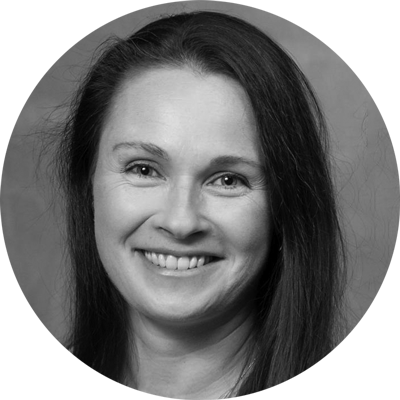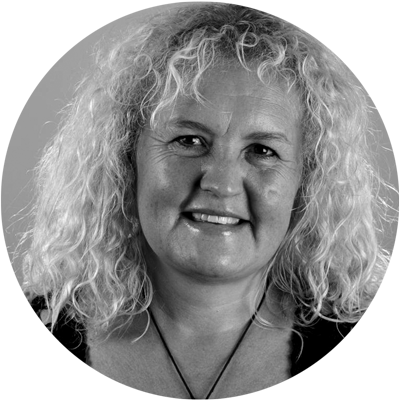Article Lead In
10 November 2022
AUTHOR: CANDY GIBSON
> BREAKOUT STORY: Why economics is essential to fighting disease
Antimicrobial resistance kills more people each year than COVID, and peak health bodies warn the situation will get worse unless urgent action is taken. In response, Australia’s top researchers have partnered with government and industry to find solutions to this global problem.
The World Health Organization has named it one of the top 10 global threats facing humanity, while the world’s highest-impact medical journal, The Lancet, calls it “the salient challenge of our time”. It threatens to turn common infections into life-threatening events and could potentially cause 10 million deaths annually by 2050 unless urgent action is taken.
Yet, despite these dire warnings, antimicrobial resistance (AMR) hasn’t sounded alarm bells in society or hit the headlines.
This could be about to change.
In Australia, the Federal Government has responded to the $283-billion AMR threat facing its economy in coming decades by injecting almost $35 million into a new partnership led by the University of South Australia.
The Cooperative Research Centre for Solving Antimicrobial Resistance in Agribusiness, Food and Environments (CRC SAAFE) was formed earlier this year, involving 70 partners contributing an additional $115 million in cash and in-kind support.
Over the next decade, the $149-million project will help tackle resistance to essential antibiotics, antifungals and antivirals, finding the sweet spot needed to manage disease in humans, animals and plants, without rendering antimicrobials ineffective.

UniSA environmental scientist Professor Erica Donner, Research Director of the CRC SAAFE headquartered in the Future Industries Institute, says the over-reliance on antimicrobials must be addressed in the next decade to save millions of lives and industries.
“We’re not just talking about human health, but animal and plant health as well, because antimicrobials are used every day in many different ways,” Prof Donner says.
Think of hospitals, aged care, animal production, horticulture, viticulture, aquaculture – all sites where antimicrobials are integral to treating and preventing disease.

“Many people fail to recognise that our reliance on antibiotics, pesticides, antiseptics and the like is encouraging microbes to develop resistance,” Prof Donner says. “Our dependence on them is the issue and we need greater stewardship.”
The CRC SAAFE is bringing together partners from government, research, academia and industry to develop potential solutions and technologies that manage and mitigate AMR.
Because AMR is a shared problem, a one health approach is needed, recognising that diseases and risks are interlinked across industries.
Prof Donner says improving diagnostics is critical to reducing the chances of using an antibiotic or pesticide that may not be effective.
“Currently, we don’t have the right tools to know, categorically, which antimicrobials will be successful on a patient or crop. There is still a lot of guesswork due to lack of services and delays in lab tests, and if the selected drug or pesticide is the wrong one, its use just compounds resistance.

“If we can improve our point-of-use diagnostic tools, it will allow us to pick the right antimicrobial at first choice.”
Vaccines are also part of the solution – for humans and animals alike – to prevent disease and thus the demand for antimicrobials. Stricter environmental controls are also needed to regulate industrial pollutants, manage waste and curb contamination.
Raising public awareness about AMR will help underpin these strategies over the long term.
“Behavioural change will only happen once individuals understand how they are contributing to antimicrobial resistance, even in a small way. Being more selective about antibiotics, chemicals and products can make a big difference,” Prof Donner says.
“This is an issue that affects human health, animal health, food production and water security. It really is a complex challenge and existential threat, so it’s essential that we take action and manage it, otherwise we will have a serious failure of medicine and production systems worldwide.”
Slow pace of drug development
If new drugs are part of the answer to combating antimicrobial resistance, why is development taking so long?

The answer is simple, according to UniSA microbiologist Associate Professor Rietie Venter.
Antibiotics are not profitable for pharmaceutical companies, costing on average $1.5 billion and taking at least a decade to develop, with no guaranteed return on investment.
“Even if you do manage to develop an effective antibiotic, it is only used for a short period when there is an infection, and as a last resort, so there is little incentive for drug companies,” Assoc Prof Venter says.
Indeed, antibiotic startups like Achaogen and Aradigm have gone belly up in recent times and pharmaceutical giants like Novartis and Allergan have abandoned the sector. One of the biggest developers of antibiotics, Melinta Therapeutics, also filed for bankruptcy in December 2019.
In Achaogen’s case, its antibiotic, plazomicin, was approved to treat complicated urinary tract infections caused by multidrug resistance, but the company was not making enough money to stay afloat. At the time it filed for bankruptcy, Aradigm was developing a drug to treat serious lung infections, and Melinta Therapeutics had just received FDA approval for delafloxacin, treating community-acquired bacterial pneumonia (CABP).
Unlike drugs for chronic conditions such as blood pressure and cholesterol, antibiotics are used infrequently and for short periods, making them commercially unattractive.
So, if antibiotic development is not profitable for pharmaceutical companies, what’s the solution for a broken market?
New incentives and payment models are needed, Assoc Prof Venter says, along the lines of the United Kingdom’s decision to sponsor antibiotic development regardless of the outcome.
The NHS is testing a subscription-style model that pays pharmaceutical companies upfront for access to drugs based on public need.
This will make it more attractive for companies to invest the estimated £1 billion it costs to develop a new drug, as they are guaranteed payment even though the antibiotic may be stored for reserves.
Currently, drugs companies are paid by volume of antibiotics sold, while the NHS is trying to reduce their use to prevent antimicrobial resistance.
Assoc Prof Venter says there are also a handful of not-for-profit organisations committed to funding antimicrobial resistance, including Swiss company GARDP and US-based consortium CARB-X.
“We need the public on board if we are to make any real headway, however. On the one hand, we must develop new antibiotics faster, but we also need to slow down the development of AMR by reducing our use of antimicrobials,” Assoc Prof Venter says.
“Misuse of antibiotics is a big problem all over the world. However, that won’t be enough because in the United States they use twice as many antimicrobials in intensive farming – not to treat sick animals but to prevent disease. There’s certainly scope for reducing that and Australia is on the right track.”
Consumers also need to be made aware of the side effects of using household products like antimicrobial soaps and disinfectants, and food packaging materials, cosmetics, electrical appliances and room sprays containing nano silver. All these products contribute to AMR.
“We need to find natural alternatives and invest in things like developing ‘resistance breakers’, compounds that can reverse antimicrobial resistance and rescue antibiotics,” Assoc Prof Venter says.
“Another option is phage therapy, using bacterial viruses to kill bacteria instead of antibiotics. If it’s possible to develop a vaccine against very common infections, that would also reduce antimicrobial use.”
Like diabetes, stress and mental health disorders, AMR is a silent pandemic.
“It’s there, but not front and centre,” Assoc Prof Venter says. “While COVID has killed 6.5 million people in less than three years and caused unimaginable grief and economic hardship, antimicrobial resistance was responsible for an estimated 4.95 million deaths in 2019 alone. It is a staggering amount and deserves more attention.”

Why economics is essential to fighting disease
The numbers tell the story when it comes to the economic damage that antimicrobial resistance is expected to wreak on the world by 2050: an estimated fall in gross domestic product (GDP) by up to 4 per cent and a 7.5 per cent drop in global livestock production.
It is underscored by the very real possibility that we are facing a ‘post-antibiotic’ era, where humans and animals will be far more vulnerable to bacterial infections due to increasingly resistant bacteria, fungi and viruses.
How can an economic lens help us to understand these potential risks and hopefully head them off at the pass, or at least mitigate them?

UniSA Economist and Senior Research Fellow, Dr Bethany Cooper, says it comes down to the supply and demand model.
“The supply of new antimicrobials and the demand for using them is what ultimately drives antimicrobial resistance,” Dr Cooper says.
“If the incentives to develop them are not strong enough – which has been the case – then supply will be too slow.
“Alternatively, if it’s too easy to use the existing antimicrobials or people don’t use them carefully, then we run the risk that too many will be circulating in the environment, making the germs adapt more quickly.”
Globalisation, lack of market incentives and poor investment returns on developing new drugs are accelerating AMR, but these challenges must be considered in the context of the benefits associated with antimicrobial use.
Dr Cooper cites two case studies that she led in 2021, showing how economics can be applied to make better decisions around the treatment of AMR and its risks. An economic lens focused on the dairy industry, and wastewater management, illustrates how the overuse of antimicrobials impacts business and industry in the short and long term.
Mastitis is a common disease in dairy cows, causing abnormal and decreased milk production and severely impacting operations. It is treated with antibiotics, which is beneficial in the short term, but when used too liberally this treatment becomes ineffective and often results in repeated episodes of mastitis.
Antibiotic residues are also harmful, causing sensitivity and allergic reactions in humans, and spoiling milk quality, with trickle down effects for consumers as well as producers. The latter face increased costs via veterinary bills, diagnostic tests, fines and even contract terminations.
Antimicrobial resistant bacteria also thrive in wastewater treatment plants and are notoriously difficult to remove, even with chlorine and ultraviolet light.
AMR bacteria then circulate in rivers and wastewater-irrigated soils, compounding the problem.
Dr Cooper says upgrading wastewater treatment plants to help break down pharmaceuticals better and remove AMR bacteria comes at a cost, but that must be weighed up against the benefits.
“We need to explore alternative treatments like membrane bioreactors, ozone and activated coal in wastewater to control AMR. The key question is, how will these costs affect agricultural producers and subsequently consumers? Who is going to foot the bill?”
Merging economics with science is vital if the world wants to avert the global catastrophic impacts of AMR.
“There are solutions at hand to reduce antimicrobial resistance – both economic and scientific – but political will is needed, along with a heightened sense of urgency and more research to find the optimal solutions. We don’t have time to waste,” Dr Cooper says.
Images: Fish: 6 on Unsplash; Brown cow: Alex Azabache on Unsplash; Vegetables: nrd on Unsplash; Dairy cows: Monika Kubala on Unsplash; Others: Shutterstock.
You can republish this article for free, online or in print, under a Creative Commons licence, provided you follow our guidelines.


